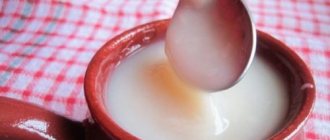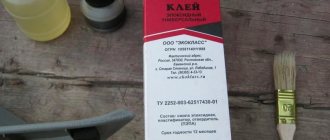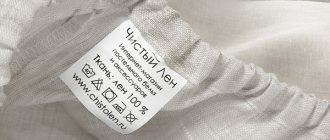– To successfully starch fabric, you need to know a few simple rules.:
- Only clean things are starched.
- You can use either potato or corn starch.
- It is not necessary to starch the entire thing. Often only a certain part is processed (for example, shirt collars).
- If lumps form when preparing the solution, you need to strain it through cheesecloth or a sieve.
There are things that are prohibited from starching:
- underwear - due to starch, it will no longer allow air to pass through, will become stiff and begin to cause discomfort;
- children's clothing - for the same reason as underwear;
- synthetics - starch does not attach to synthetic fabrics;
- black and dark things - starch can leave noticeable stains on the fabric;
- summer clothes - you can starch only individual elements of clothing, but not the entire item due to reduced breathability;
- items decorated with floss - starch will glue the embroidery threads together, they will lose their attractive appearance and brightness.
The starch solution can be prepared in three variations.
What is the difference between cornstarch and flour?
Cornmeal is finely ground whole corn kernels into powder. Meanwhile, cornstarch is also a powder but is made from only the starchy part of corn. Due to their different nutritional profiles and processing methods, they have different culinary uses.
Interesting materials:
What is this Ogrnip? What does Lock Up mean? What is this advertisement? What do Muslims say after eating? What do our fingers say about us? What did Kutuzov say about Moscow? What should I tell my cardiologist? What borders the Rostov region? What is the penalty for non-compliance with the mask regime? What is ultrasound and infrasound for humans?
Soft solution
Suitable for bed linen, cambric and chiffon items, light blouses, dresses. Gives things a little elasticity without rigidity.
Algorithm of actions:
- Proportions – 1 tsp. Mix starch with 200 ml of cold water.
- Boil 800 ml of water and, without removing from heat and stirring constantly, pour in 200 ml of the prepared starch solution. Turn off the fire.
- Leave to cool to room temperature.
- Then pour into a suitable container and dip the item into the solution for 2-3 minutes.
- Remove the product, squeeze it out, shake it. Straighten it well, smoothing out all the wrinkles if possible. Hang to dry. Afterwards iron it well.
Why is starch added to the dough?
There are several reasons to add starch to the dough. Let's list and look at them in a little more detail.
Firstly, if you want to cook manti, pasties, pancakes, dumplings or dumplings, then starch must be added. Since this will allow you to roll out or pour (if you are preparing pancakes) the dough as thinly as possible. In addition, it will not tear during cooking.
It should be noted that it would be a particularly good idea to add starch to the dough for manti.
Because in this dish it is important that the dough is as thin as possible and does not tear, which is simply impossible to achieve without using the above substance
Secondly, in order to make the biscuit dough drier, it is also a good idea to add starch. This process is especially important when making pie from apples or other fruits that produce juice. When kneading the dough, you can use the same amount of starch instead of 20-30% flour. You can add a little more to the pancakes. But don’t rush, add starch gradually, because you need to practice a little to learn how to properly cook pancakes that contain starch.
As for sauces, in this case the starch is diluted not only with water, but also with oil. In addition, some recipes involve frying starch with oil and then diluting it with some liquid.
Chinese cuisine has a wonderful tradition, the essence of which is to bread meat, vegetables, cutlets, cheesecakes and fish in starch mixed with various spices. This not only gives a pleasant taste, but also allows you to achieve a crispy crust and preserve the juiciness of the prepared product as much as possible. That is why this method is actively used in our country.
It would not be superfluous to add starch to baked goods, as well as to desserts. Because it will absorb all the excess moisture and allow you to bake an airy, loose and light sponge cake.
Professional chefs use another interesting trick. Its essence is that if starch is added to the dough, then it must be kneaded exclusively with dairy products. And due to the fact that starch gives the dessert a not very expressive taste, you should not forget about the use of spices.
An important feature of rice and corn starch is that it does not contain gluten, which allows it to be used in the preparation of medicinal and dietary dishes. A wide variety of jelly, puree soups, sauces, jellies, puddings, and syrups are also prepared from corn starch.
Don't forget that baked goods that contain corn starch will always turn out appetizing, crumbly and tender. In addition, it will have excellent taste, golden brown crust and a beautiful and attractive color. So from such starch you can easily prepare excellent muffins, pancakes, scones, cupcakes, pancakes or casseroles, and the baked goods will not be devoid of everyone’s favorite mealy taste.
In most cases, starch derived from rice is used as a thickener for white sauce. It is also often used for mousses, breading, casseroles, buns, or for making pies and pastries.
Due to the fact that starch is mostly used as a thickener, it can easily be replaced with another product that has similar properties. For example, instead of it you can confidently use gelatin, agar-agar, coconut flakes, semolina or rye, buckwheat and flaxseed flour.
Eggs are a good substitute for corn or potato starch. That is, instead of two tablespoons of starch, you can use one egg. You can also use raw grated potatoes as a thickener for cutlets. Well, if you need to thicken the jelly, then you can hardly find a worthy replacement, but in certain recipes flax seeds or oatmeal can be used.
In what cases will there be an effect?
Diarrhea can be caused by various reasons. Stool liquefaction is one of the symptoms of a general disease. Starch will not stop diarrhea if it is caused by an intestinal infection. This type of diarrhea is characterized by watery green stool mixed with mucus and blood. Pathogenic microbes suppress the production of enzymes in the intestines. This process interferes with the absorption of carbohydrates, including starch. If diarrhea is infectious, the remedy will only help remove toxins released by bacteria and viruses.
The use of folk recipes with starch will bring the desired effect if the cause of diarrhea is:
- mild poisoning;
- excitement, stress;
- irritable bowel syndrome;
- eating fatty foods;
- binge eating;
- dysbacteriosis;
- Traveler's diarrhea.
If stool disorder is caused by chronic gastrointestinal diseases, the product will help relieve pain, because has an enveloping effect.
Why do you need to starch fabric?
After treatment with a starch solution, the threads of the product are saturated with carbohydrates. A thin film appears on the sides of the material, as a result of which:
- The fabric becomes dense, the item holds its shape better and does not wrinkle;
- Light-colored products acquire a whitening effect and look more elegant;
- Things do not get dirty for a long period of time, since the film protects clothes from contamination;
- With further washing, the dirt is easily washed off.
It should be borne in mind that starch should only be applied to items that have been washed, clean, and without flaws.
A very common and cheap version is to use potato starch. In everyday life, starch from corn, rice, and wheat is used.
Drink density
The main thing is to cook the jelly to the desired consistency. How much starch should you put per liter of liquid? It all depends on your preferences. If you want to get liquid jelly, then for one liter of juice you will need three large (tablespoons) tablespoons of starch.
For a medium-thick drink, you need to take 4 large spoons of starch, and for thick jelly - 5 large spoons. Please note that after cooling the drink will become slightly thicker. In the old days, it was customary to cook very thick jelly, which had the consistency of jelly. It was cut with a knife and served to the table in this form.
Method for starching skirts or dresses
When starching an adult or children's dress to make the material denser, it is better to use a light composition. You must first wash the product thoroughly, remove stains, rinse thoroughly, and then immerse it in the prepared mixture for 5 minutes. Lightly wring out the item, arrange all the creases and dry on a hanger. Iron the product while damp through gauze.
Sugar starch for crocheted products
How to make starch that will stiffen tulle and other crocheted fabrics? It is worth using sugar starch. What will you need to prepare it?
- 4 tablespoons sugar
- 4 tablespoons water
First boil the water. Dissolve sugar in water. Cool it all and put your things in the prepared starch.
Here's a simple starch and sugar recipe! You can also soak more delicate materials, such as a tulle skirt or thin curtains.
How to make a thick liquid?
Use arrowroot starch to thicken liquids.
- Combine equal parts arrowroot starch and cold water in a small bowl, whisking thoroughly to avoid lumps.
- Add the starch and water mixture to the hot liquid
and cook for 30 seconds over medium-high heat, stirring constantly.
Interesting materials:
Who are bohemians? Who are merciful people? Who are responsive people? Who are these pretentious people? Who are decent people? Who are cowardly people? Who is this absurd person? Who is a neat person? Who is an ambitious person? Who is an adventurer?
How to make potato starch
If you want to make starchy powder with your own hands, it is important to choose the appropriate fruits, follow the recipe and carry out all the actions that are usually performed in production
How to choose potatoes
At home, potato starch is made from fruits that contain a large amount of this substance - from 20-25% and above. This indicator is influenced by the variety of root crop. The most starchy varieties are Lorch, Woltman, etc. A large amount of the final product is obtained from them.
Advertisements
Innovative shovel "Harvest"
To correctly select potatoes with a high starch content, cut the root crop in half and carry out simple experiments:
- Rub the cut of the tuber onto the palm of your hand. If there is a lot of starch, a powdering effect is felt on the skin;
- The cut potatoes are left in the air for 20-30 minutes. When moisture evaporates, a starchy film forms on the cut surface. The faster it appears, the more useful substance in the tuber.
Potato connoisseurs note: brown-skinned potato tubers have a high starch content. This root vegetable quickly crumbles when cooked. It makes an excellent puree.
You cannot get starch from spoiled, frozen potatoes. The beneficial substances in it turn into sugars, which dissolve in water. Small root vegetables are not suitable for this. These potatoes have a lot of fiber and a starch content of 8-10%.
Potato starch contains several components important for digestion. Among them are carbohydrates, proteins, saccharides, etc. The loose white, tasteless powder contains useful minerals: calcium, potassium, phosphorus.
Baths with starch for bathing children
A starch bath is very effective, especially for young children. To prepare it, prepare:
- 2 tablespoons potato flour
- 6 liters of water
To prepare potato starch, you only need... a few minutes.
Dissolve 2 tablespoons potato flour in 2 cups water (cold).
More deliciousness:
How to get rid of yellow sweat stains on clothes
Pour boiling water over the mixture, remembering to stir constantly. It shouldn't stick together! Pour the resulting starch solution into a baby bath, which should first be filled with warm water.
Give your child a bath for at least 5 minutes.
A potato flour starch bath is ideal for children as it soothes skin lesions. In addition, it is perfect for caring for delicate skin under a diaper. Thanks to the bath, you can eliminate redness, prickly heat, abrasions or allergic rashes. This is also a great solution for atopic dermatitis!
Medium solution
Helps give things a more rigid shape and refresh the color. Can be used for starching shirts, curtains, tablecloths and napkins.
The middle solution is prepared in the same way as a soft solution : to prepare 1 liter of the composition, starch must be diluted in 200 ml of cold water, then boil the remaining 800 ml of water, pour in the starch preparation, mix thoroughly and remove the solution from the heat.
But there are three differences:
- Proportions – 1 tbsp. l. starch per 1 liter of water.
- Products made from tulle and other thin fabrics are dipped into the solution for 3-5 seconds. Shirts, napkins and tablecloths - for 10 minutes. Lace - for 15-20 minutes.
- If the solution is too thick, you can slightly dilute it with warm water.
What can't be starched?
Not every item can be treated with starch. There is a certain list of products that cannot be starched.
Do not use starch:
- On underwear, since starched material does not conduct air well, it is difficult for the skin to breathe. Some parts may rub the body and create discomfort.
- Lightweight clothing. During the hot period, when wearing summer clothes, a person wants to feel cozy and comfortable, and starch turns the material into a dense, tight fabric. It is better to starch individual elements, such as a collar or frill on a dress.
- Dark, monochromatic items develop vague streaks and require rinsing several times.
- Things made of synthetics, since they will still remain soft.
- Embroidered products with floss threads. The starch solution will stick the threads together and the work will look sloppy.
Some tips
Even preparing such a simple drink has its own little tricks. Starch must be dissolved in a small amount of cold liquid and then added to the total mass. Only in this case will the homemade jelly be homogeneous, without lumps. When you pour the starch into the pan, continuously stir its contents so that it is evenly distributed throughout the entire mass.
After adding starch, boil the jelly for no more than a minute. Otherwise, the substance will break down into glucose, and the drink will be too liquid. When choosing a container, give preference to enamel pans and never aluminum ones. Many fruits can change their color from exposure to this metal.
Choosing starch
How to cook jelly? How much starch per liter of water should you put in? Almost every novice housewife asks herself these questions. Let's start with choosing starch. There are several options here. Rice starch makes the jelly a little cloudy. It is used if the transparency of the finished dish is not very important. For example, for sauces or opaque desserts. Corn makes the drink more delicate, but we are not talking about transparency here either. Potato starch is best suited for cooking. The texture of the drink will be perfect and the color transparent if you follow the preparation technology.
Honey jelly
The recipe for jelly made from starch and honey is quite simple. Honey will add aroma and taste to the drink, but due to boiling it will lose some of its beneficial properties. Take 200 grams of honey, 50 grams of potato starch and some water. We dilute the honey with warm water and put it on fire. Bring to a boil and add starch diluted with a small amount of water. After the drink thickens, turn it off. You can add a little citric acid to improve the taste. But remember, the less you boil this drink, the healthier it will be.
Sea buckthorn jelly
Much has already been said about the healing properties of sea buckthorn. And if she gives all her valuable and nutritious vitamins to the prepared drink, then it will become even more useful. To prepare, take 2 cups of sea buckthorn, half a cup of sugar, 4 large spoons of starch, 1.5 liters of water, 4 cloves and 5 spoons of honey.
Place sea buckthorn, sugar and cloves in a saucepan and fill with water. Cook for about 30 minutes. Then we strain the fruit through a sieve, and pour the broth back into the pan and put it on the fire. Mix the pureed berries with starch and add to the broth. Bring to a boil, remove the cloves and add honey to the pan. Turn off the fire.
Dried fruit jelly
To prepare this jelly, you can take any dried fruits (raisins, prunes, dried apricots, cherries, pears, apples, etc.). Place dried fruits in a saucepan and fill with water. For a kilogram of fruit we take 4 liters of water. Cook for about 30 minutes until they are softened. If you use sugar, add it at the beginning of cooking. Add honey only at the end. Take 6 tablespoons of starch and dilute it with a small amount of water. If you want to get a thick jelly, then take 2 more spoons. Gradually pour the starch into the boiling base and turn off the pan. It is recommended to consume dried fruit jelly only chilled. If desired, you can strain the base and remove the drying, but this will be more interesting and tastier.
Recipe for liquid aromatic starch for clothing care
You can use cold liquid starch to spritz it on your favorite clothes and make them... smell wonderful! How to do it?
So what do we need:
- potato flour (starch),
- Bowl,
- scales or measuring cups,
- gas stove,
- aromatic oil,
- aerosol cans.
Pour about 3 3/4 cups water into the pan and bring to a boil.
Place 1 tablespoon of potato flour in a bowl and cover with cold water (1/4 cup).
Stir, thoroughly dissolving the flour. The water should be cold so that the starch does not activate.
Pour the mixture into the boiling water, stirring, making sure it doesn't stick together. Wait for it to thicken and reduce the gas to low flame. Cook for another minute.
Remove the pan and let the starch cool.
Pour the starch into a bottle and use it on your favorite clothes. You can also add fragrance oil to it so that your clothes absorb the scent.
Preparation of starch for fabric napkins, tulle, tablecloths
To prepare starch, you can use potato flour, sold in many supermarkets.
Boil about 0.5 liters of water.
Place 2 tablespoons of potato flour in a glass half filled with cold water. Mix well until smooth.
Pour the mixture into a saucepan with boiling water, stir with a spoon or wooden spatula.
Stir until the mixture thickens. Remove from heat.
Dip dry wipes into still warm starch. Immediately iron them wet or stretch them onto a canvas (or form). If you decide to stretch the napkin onto the canvas, pin it with pins to give it the desired shape once it dries. Leave everything to dry.
Remember that dry wipes will be stiff, like cardboard. The thicker the starch, the stiffer the drape will be. So, depending on your requirements, you can increase or decrease the starch concentration by adding... water!
More deliciousness:
How to choose a convenient and safe cutting board? Which is better: wood, glass, granite, stainless steel?
Why starch must be stored in a container after drying
After preparing any type of starch, it must be poured into glass or plastic containers and stored in a closet out of direct sunlight. If these rules are not followed, it will deteriorate. When moisture gets in, starch absorbs it and loses its properties.
After opening the package, it is better to pour it into a container or close the bag with clothespins to prevent moisture from entering.
Starch also absorbs odors. Therefore, if it has absorbed the smell (for example, of garlic standing nearby), then all products prepared with the addition of this starch will smell of garlic - baked goods, jelly, and cream soup.
Various small insects that can penetrate flour, sugar or rice are also not averse to living in starch.
Method for starching napkins
Elegant lace doilies are crocheted from cotton threads of various thicknesses. Such lace wrinkles easily after washing. To give an aesthetic appearance, they are usually treated with a starch solution. This allows you to clearly see the intricate pattern and maintain the required shape.
Typically, lace napkins are starched with a moderate solution. Immerse the product in the prepared solution for 10-15 minutes. Then squeeze out, straighten and lay out on a smooth surface.
It is recommended to iron lace through the fabric while damp.
If you are making crocheted baskets or crocheted plants, then it is better to use a thick, concentrated solution.











